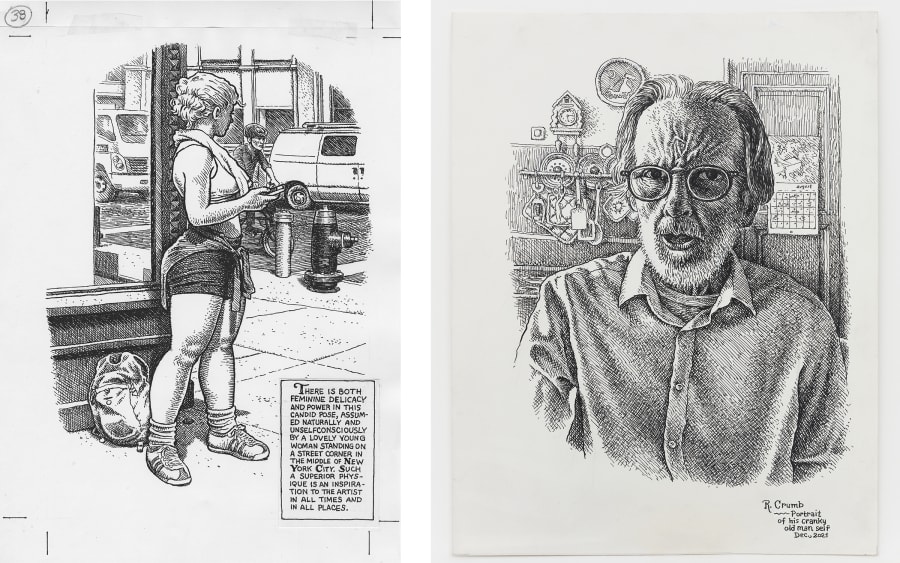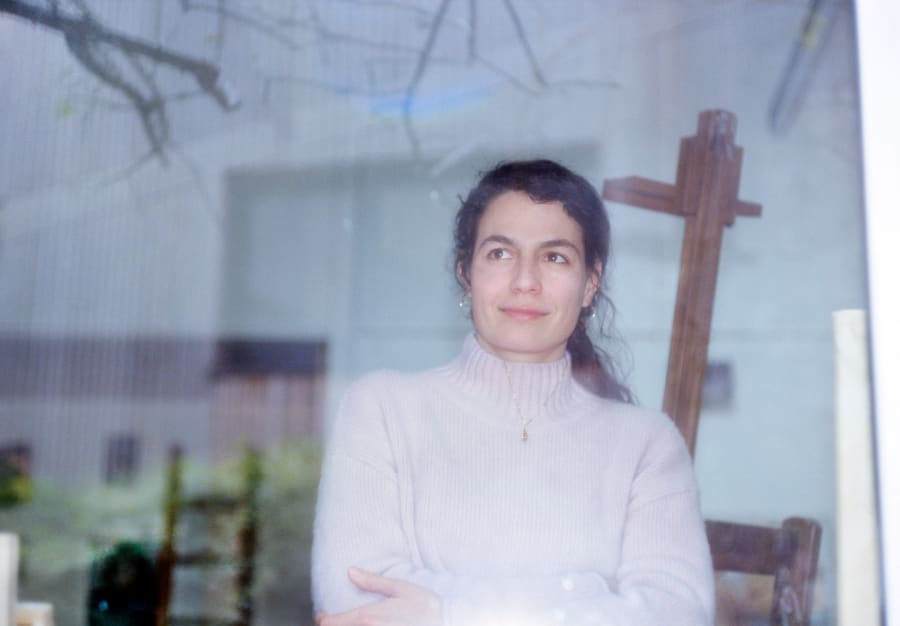In collaboration with the Centre Pompidou
A purple-skinned creature soars toward the heavens, its pink hair billowing behind. A little lower down, another figure blows into a megaphone. Still others read, sew, or frolic. Everything is brightly hued; nobody is standing still.
Welcome to the Centre Pompidou as envisaged by French comic-book illustrator and author Fanny Michaëlis. Emblazoned across the top left corner of her vibrant poster design for one of Paris’s major summer exhibitions is the title: ‘La BD à tous les étages’ (‘Comics on Every Floor’). The brainchild of Laurent Le Bon, President of the Centre Pompidou, the show has a title that should be taken literally because, from May 29, every department across the entire building will be dedicated to ‘the ninth art.’
‘We’re taking comics as they are: that is, as an art form,’ says Anne Lemonnier, Curatorial Assistant at the Musée national d’art moderne. As part of this unique event, she is in charge of two exhibitions. The first, ‘La bande dessinée au Musée’ (Comics at the Museum), is a journey through the modern collections, with six monographic presentations on the great masters of the genre (Edmond-François Calvo, Will Eisner, Hergé, George Herriman, Winsor McCay, and George McManus) as well as a series of tributes by contemporary artists that respond to the historical figures who’ve inspired them. With Emmanuèle Payen, Director of the Cultural Development and Cinema Department at the Bibliothèque publique d’information, Lemonnier is also co-curator of a large-scale mural occupying the entire upper floor, Bande dessinée, 1964–2024.
‘When it comes to creating an exhibition covering more than 1,000 m2 that represents all comics since the 1960s, we quickly come up against the thorny question of completeness,’ explains Lemonnier. ‘How do you go about it? Where do you start? You have to listen to history and to know who to surround yourself with,’ she continues. Two specialist advisors were invited to join the curatorial team: Thierry Groensteen, a comics historian, and Lucas Hureau, director of the MEL Compagnie des arts, whose in-depth knowledge of manga proved invaluable. The cross-generational survey, which features more than 700 works by almost 130 comic-book artists, is the first in France to bring together the three key graphic traditions of Franco-Belgian ligne claire, American comics and Japanese manga. Visitors to the Centre Pompidou will be taken on a journey through 12 atmospheric sections, which move from counterculture to fright, from reverie to laughter, and from introspection to anticipation. Lemonnier notes: ‘We have woven together a curatorial discourse that aims to expand appreciation and understanding of the field. Undeniably, there’s a subjective perspective to the show, but we wanted to embrace that as it led to a more exciting outcome.’ Payen is just as passionate: ‘I’m an avid reader of comics. What really catches my eye is the richness of the stories, especially those that question gender, identity, and society.’ She draws my attention to the Bibliothèque publique d’information’s recent exhibition program, which has featured a number of monographic shows by comic-book artists, including Claire Bretécher (2015), Catherine Meurisse (2020), and Hugo Pratt, whose illustrations depicting the nautical adventures of Corto Maltese were the focus of a show earlier this year.
‘La BD à tous les étages’ continues the Centre Pompidou’s pioneering level of engagement with this art form, of which the institution has hosted several landmark exhibitions, including ‘Bandes dessinées et vie quotidienne’ (‘Comics and Daily Life’, 1977), ‘Héros de papier’ (‘Paper Heroes’, 1988), and ‘Hergé’ (2006). The present moment is a particularly fitting one in which to write a new chapter on the complex love affair between art and comics. ‘This spotlight follows on from the positive developments comic artists have experienced in recent years, such as being admitted into both the Collège de France and the Académie des Beaux-Arts, as well as more frequent invitations to show their work in museums,’ observes Meurisse. In 2020, she became the first comic-book artist to be appointed to the Académie des Beaux-Arts. Her work is featured both in the ‘Rire’ (Laughter) section of ‘La BD à tous les étages’ and in dialogue with the paintings of Mark Rothko. Meurisse, who says she has always ignored artistic hierarchies, prefers her work to be provocative, as attested to by publications such as Moderne Olympia (2014) and Delacroix (2019). Accustomed to ‘debunking the myth of the powerful in all categories’ in her work as a caricaturist, she adds: ‘In art, once the hierarchy has been exploded, you have treasures before your eyes and at your fingertips that you are no longer afraid to approach.’
For Meurisse, comics have a ‘rebellious, unstable or gatekeeper’ status, which is what makes them so rich. This versatility is equally important to artist Jochen Gerner, who works on editorial commissions as well as showing with Galerie Anne Barrault in Paris. ‘I like to draw in a variety of rhythms, using multiple techniques and different media,’ he says. ‘The comic strip possesses this ambiguity, which is both its strength and, sometimes, its weakness: on the one hand, it’s a unique artwork; on the other, thanks to its reproducibility, it’s a multiple.’ A graduate of the École nationale supérieure d’art de Nancy, Gerner is known for his precise brushwork in Indian ink. Curious about all forms of imagery, he explains: ‘My aesthetic training doesn’t only come from other artists. I love architectural, scientific, and technical imagery, too.’ The medium’s versatility may well explain why comic-book art is attracting more young artists than ever before. Meurisse’s irreverence, Gerner’s journeys into the unknown: these works seduce because they align with the spirit of a fluid age that no longer chooses to define itself within outmoded parameters. ‘This appeal is part of a vast whole that includes digital worlds, urban art, animated films and manga,’ Gerner concludes. ‘All this corresponds to an intense, ultra-contemporary energy and, therefore, to an accurate reflection of the world.’
This article is part of a collaboration between Paris+ par Art Basel and the Centre Pompidou.
‘La BD à tous les étages’
From May 29 to November 4, 2024
Centre Pompidou, Paris
Ingrid Luquet-Gad is an art critic and PhD candidate based in Paris. She teaches art philosophy at the University Paris 1 Panthéon-Sorbonne.
English translation: Art Basel.
Caption for header image: Lagon Magazine. Gouffre numero. © Splash.
Published on May 28, 2024.


